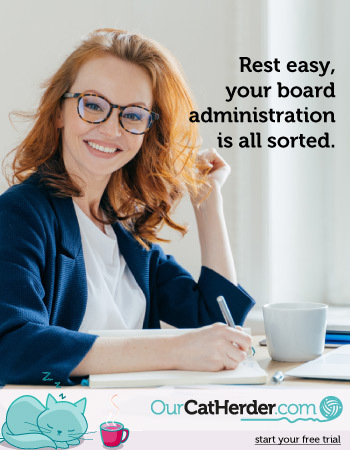strategy-risk
The Strategic Board - Key Challenges and 5 steps to address them
Published: September 22, 2024
Read Time: 4 minutes

Strategic thinking is crucial for nonprofit organisations to navigate the complexities of their environment effectively. Without it, nonprofits risk stagnation, mission drift, and ultimately, failure to make a meaningful impact.
This article dives into the critical challenges nonprofit boards face in strategic thinking, and provides bold, evidence-based solutions to overcome them.
Why is Strategic Thinking Important for Nonprofit Boards?
Nonprofits operate in dynamic environments where funding sources, regulatory requirements, and community needs can shift rapidly. Strategic thinking enables Boards to:
- Navigate Complexity
- Align Resources
- Ensure Sustainability
- Foster Innovation
Key Challenges to Strategic Thinking for Nonprofit Boards
1. Lack of Strategic Expertise
Nonprofit boards are often composed of passionate individuals dedicated to the organisation’s mission. However, they may lack the strategic expertise required to navigate complex environments effectively. A survey1 by BoardSource found that only 27% of nonprofit Board members rated their Boards as highly effective in strategic thinking.
2. Short-Term Focus
Nonprofit boards often face pressure to meet immediate funding requirements and demonstrate quick wins to donors, leading to a short-term focus. This can undermine long-term strategic goals and sustainability. In today’s fast-paced environment, this challenge has only intensified, with boards often feeling the need to respond rapidly to immediate crises or opportunities at the expense of long-term action.
3. Groupthink
Groupthink, where cohesive groups prioritise consensus over critical evaluation, is a common issue in nonprofit boards. This can stifle insights and lead to suboptimal strategic decisions.
4. Inadequate Information and Data
Effective strategic thinking requires access to accurate, timely information. Many nonprofit boards struggle with either insufficient data or information overload, making it challenging to derive actionable insights.
5. Misalignment with Organisational Goals
Boards can sometimes operate in isolation, leading to strategic decisions that do not align with the nonprofit’s mission and goals.
The Five Steps Boards Should Take to Build Their Strategic Muscle
Building strategic muscle requires intentional effort and commitment. Here are five practical steps nonprofit Boards can take to enhance their strategic thinking capabilities:
1. Develop a Strategic Mindset:
- Practical Action: Dedicate a portion of each board meeting to strategic discussions. Encourage members to bring forward articles, case studies, and insights on sector trends. Establish a culture where strategic thinking is a regular agenda item, not just an annual retreat activity.
2. Engage in Regular Strategic Retreats:
- Practical Action: Organise bi-annual retreats focused on long-term thinking and scenario analysis. Use these retreats to step back from daily operations and think big about the future. Include facilitated sessions that challenge existing assumptions and explore new opportunities.
3. Implement Continuous Learning and Development:
- Practical Action: Create a Board learning calendar with monthly topics relevant to strategic thinking. Invite guest speakers, conduct workshops, and encourage board members to attend relevant conferences. Share insights from these learning sessions in subsequent board meetings.
4. Foster a Culture of Strategy:
- Practical Action: Establish a strategy and innovation committee within the board tasked with identifying and evaluating new thinking and new ideas. Launch pilot projects to test these ideas, and hold regular review sessions to assess their impact and scalability. Recognise and reward creative solutions that advance the nonprofit’s mission.
5. Leverage Technology and Data:
- Practical Action: Invest in a data analytics platform that provides real-time insights into key performance metrics. Train board members on how to interpret data and integrate it into longer term decision-making. Schedule quarterly data review meetings to track progress and adjust strategies based on evidence.

Conclusion
Nonprofit boards play a critical role in guiding organisations toward long-term impact and sustainability. By addressing the challenges of strategic expertise, short-term focus, groupthink, inadequate information, and misalignment with organisational goals, boards can significantly enhance their strategic thinking capabilities. Implementing these evidence-based solutions can help boards navigate the complexities of the nonprofit sector, driving their organisations toward sustainable success and meaningful impact.
Further Resources
Event: Spark Strategic Thinking In Your Boardroom
Compliance and Creativity: the strategic obligations of directors
Unlocking the Power of Strategic Thinking and Planning
-
(BoardSource, 2021) ↩︎
Share this Article
Recommended Reading
Recommended Viewing
Author
-
Spark Strategy
Founder
- About
-
Advisor, author and speaker, George’s public life journey has seen him move from successful entrepreneur to advisor and now a sharer of ideas and insights for social change.
George’s experience spans 25 years and well over 10,000 hours helping people get impactful, aligned outcomes. Whether it’s retreats, panels, face-to-face and remote workshops or largescale events, George brings calm confidence and experience to any environment. George has been a speaker for over 20 years, ranging from large scale tech conventions in the USA to community driven charity and not for profit gatherings. He speaks from the heart, from his life experience and for impact on a broad range of topics focused on strategy and innovation for impact.
George writes frequently about social change and is currently writing his next book where he taps into science and research, interviews change makers and shares his own journey from profit to purpose in order to help more people re-balance their lives and realise their own profit and purpose equilibrium.
Prior roles saw George as the National Lead Partner for Transformation at Grant Thornton, Program Director for the Department of Premier and Cabinet as well as Chairman and Non-Executive Director on a number of technology and service businesses. In his spare time, George can be found making a mess in the kitchen and cooking up a storm with his kids.
Found this article useful or informative?
Join 5,000+ not-for-profit & for-purpose directors receiving the latest insights on governance and leadership.
Receive a free e-book on improving your board decisions when you subscribe.
Unsubscribe anytime. We care about your privacy - read our Privacy Policy .










